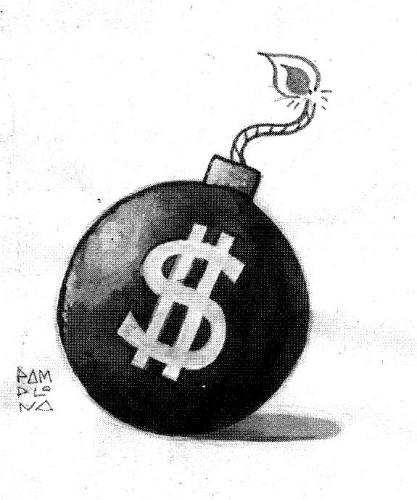Defense Spending Is Much Greater than You Think: 1 Trillion Dollars
In fiscal year 2009, which ended last September, the Pentagon spent $636.5 billion. Lodged elsewhere in the budget, however, other lines identify funding that serves defense purposes just as surely as—sometimes even more surely than—the money allocated to the Department of Defense. On occasion, commentators take note of some of these additional defense-related budget items, such as the Department of Energy’s nuclear-weapons program, but many such items, including some extremely large ones, remain generally unrecognized.
Since the creation of the Department of Homeland Security, many observers probably would agree that its budget ought to be included in any complete accounting of defense costs. After all, the homeland is what most of us want the government to defend in the first place.
Other agencies also spend money in pursuit of homeland security. The Justice Department, for example, includes the Federal Bureau of Investigation, which devotes substantial resources to an anti-terrorist program. The Department of the Treasury claims to have “worked closely with the Departments of State and Justice and the intelligence community to disrupt targets related to al Qaeda, Hizballah, Jemaah Islamiyah, as well as to disrupt state sponsorship of terror.”
Much, if not all, of the budget for the Department of State and for international assistance programs ought to be classified as defense-related, too. In this case, the money serves to buy off potential enemies and to reward friendly governments who assist U.S. efforts to abate perceived threats. About $5 billion of annual U.S. foreign aid currently takes the form of “foreign military financing,” and even funds placed under the rubric of economic development may serve defense-related purposes indirectly. Money is fungible, and the receipt of foreign assistance for economic-development projects allows allied governments to divert other funds to police, intelligence, and military purposes.
Two big budget items represent the current cost of defense goods and services obtained in the past. The Department of Veterans Affairs, which is authorized to spend about $124 billion in the current fiscal year, falls in this category. Likewise, a great deal of the government’s interest expense on publicly held debt represents the current cost of defense outlays financed in the past by borrowing from the public.
Read More from The Intelligence Daily
